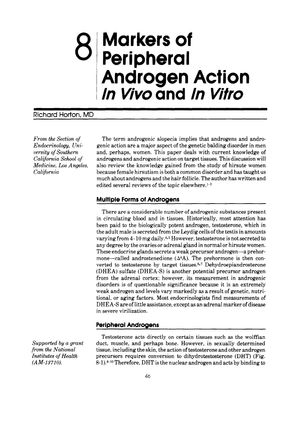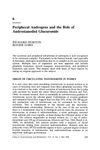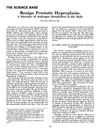Markers of Peripheral Androgen Action In Vivo and In Vitro
October 1988
in “
Clinics in Dermatology
”

TLDR Dihydrotestosterone (DHT) is crucial for conditions like male-pattern baldness and acne, and measuring a byproduct, androstanediol glucuronide, is a better way to assess DHT's effects than DHT blood levels.
In the 1988 paper by Richard Horton, MD, the importance of dihydrotestosterone (DHT) in androgenic alopecia, hirsutism, and acne was emphasized, noting that DHT's formation from testosterone via the enzyme 5α-reductase in target tissues is key to androgenic effects. Blood levels of DHT were deemed unreliable markers for androgen action disorders, with androstanediol glucuronide (3α-diolG) suggested as a better indicator of peripheral DHT formation and 5α-reductase activity. The paper also discussed 5α-reductase deficiency, which leads to male pseudohermaphroditism and the absence of male-pattern balding, highlighting the significance of DHT in human physiology. Horton called for more research on DHT in skin during early hair loss stages for improved understanding and treatment of androgenetic alopecia. The paper did not mention the number of participants in studies, focusing instead on biochemical and physiological aspects.

